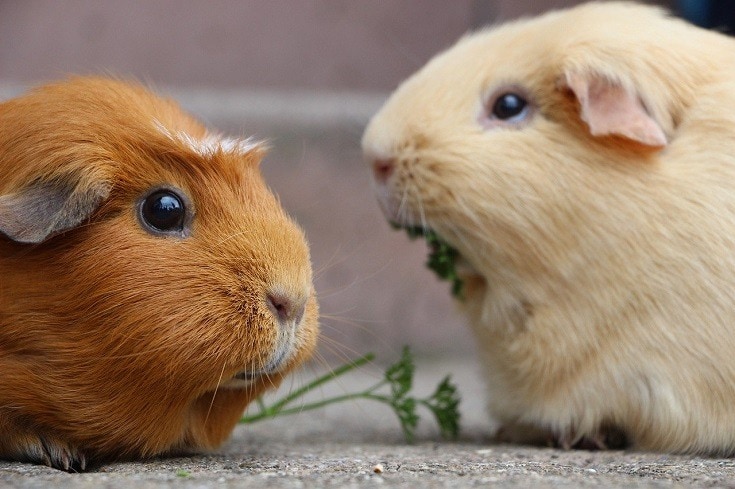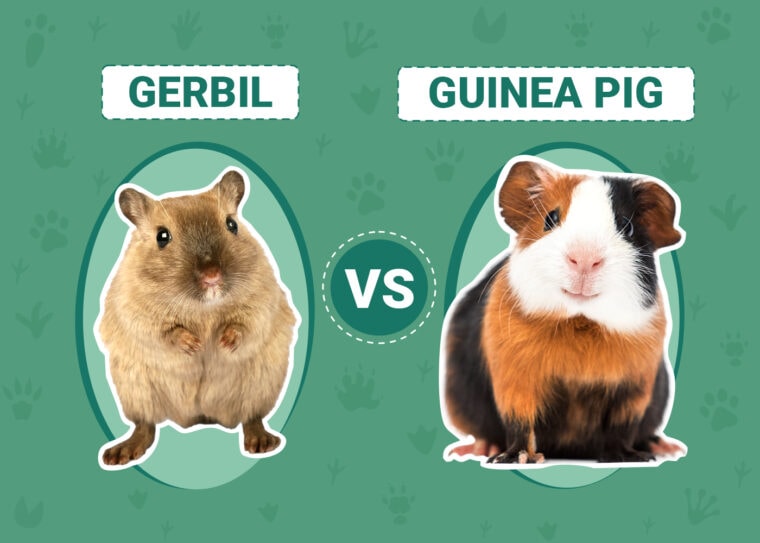
Click to Skip Ahead
Although having a cat or a dog is many people’s dream, sometimes these pets are simply too large or high-maintenance to fit into your current lifestyle. Consider gerbils or guinea pigs if you want a simpler solution to fill the pet-shaped hole in your life. But how do you decide which one is right for you? Here is a breakdown of the similarities and differences between the two animals to help make your decision.

Visual Differences

At a Glance

Gerbil Overview
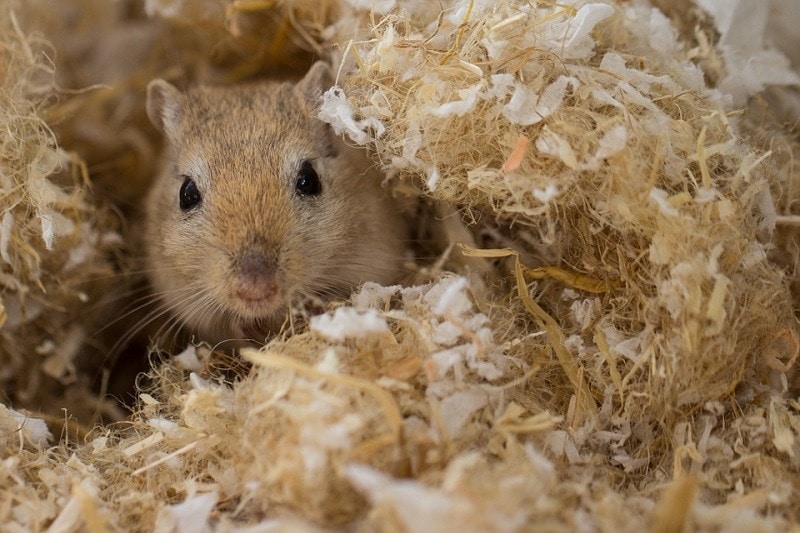
Personality / Character
Gerbils are curious creatures with an overall playful nature. They are always moving around, frequently digging, sniffing, climbing on things, running, or chewing with a fearless nature that makes it essential to monitor them outside their cage. These little rodents are fun to watch and play with because of this level of activity.
Gerbils can be quite affectionate with their owners. They tend to be friendly and enjoy spending time with you, going so far as to show signs of sadness when you are away. Although they do love their owners, it is also important to handle them carefully and respectfully. Don’t startle them or they will bite. Introduce them to strangers slowly because the interaction can cause them anxiety.
Training
Training a gerbil is primarily done through a process of positive reinforcement. If you want them to do something, you need to incite the action and immediately reward them for it repeatedly. These methods are often used in labs for scientific studies but can be done with plenty of patience in the home environment.
Health & Care
Caring for a gerbil involves feeding them a healthy diet for a naturally omnivorous, desert species. They primarily eat parts of plants, which can include things like fruits, vegetables, and seeds. They need high-quality dry food to keep them happy and healthy. You can buy food specifically for gerbils, or you can even make your own.
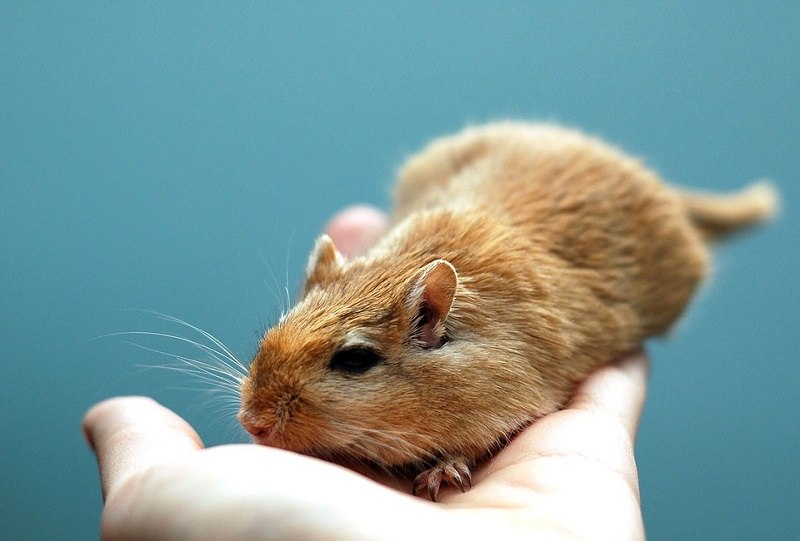
Beyond feeding, they always need access to fresh water and material in their cage to climb or run on because they are active creatures. Give them plenty of space in their cage, and make sure to clean it regularly to keep them healthy. Clean it out at least once a week.
Place their cage in a safe area out of direct sunlight during the day, and keep it dry and not in the direct path of any ventilation. You should take them out daily to get them accustomed to human interaction and stimulate their minds.
Suitability
Families with pet allergies to cats and dogs are well-suited to own a gerbil or two. Since gerbils are so small and delicate, they are often better for families without very young children.

Guinea Pig Overview
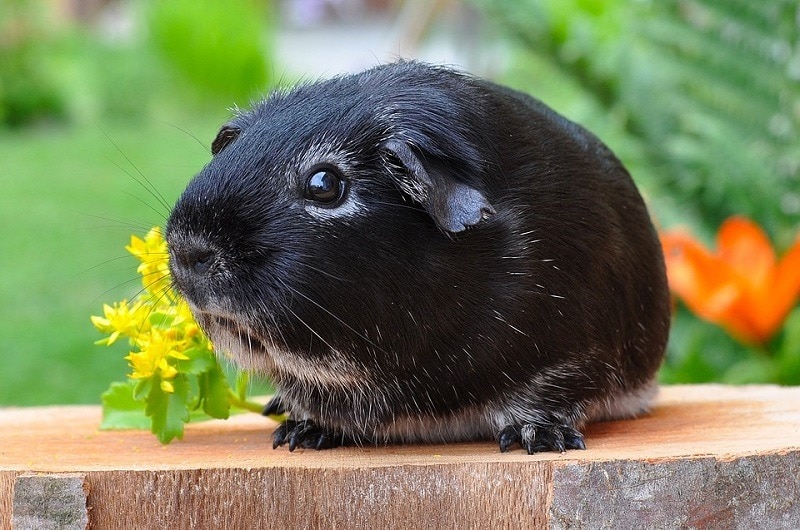
Personality / Character
Guinea pigs are much larger than gerbils and tend to pack on more weight than their skinny, scampering counterparts. They are not as active as a gerbil, but they are still quite curious and want to explore anywhere they can fit.
Guinea pigs tend to have outgoing personalities with their owners but are timid when they meet new people or are around other, larger animals. Rodents like gerbils and guinea pigs are instinctively accustomed to being prey and shouldn’t be allowed around dogs and cats without intense supervision.
These larger rodents are known for being quite affectionate. When you have handled them for a while, they can get clingy and won’t like to be separated from you. Out of most small pets, guinea pigs are often the ones that you can hold in your lap for the longest.
Training
Guinea pigs have a higher capacity for training because they are quite intelligent small animals. They are not that flexible, so you can’t expect flips from them. However, you can train them to come when you call their name and even to use a litter box.
Positive reinforcement is an excellent way to train your guinea pig. Guinea pigs are food-oriented, but be careful with how many treats you give them, since they struggle with obesity.
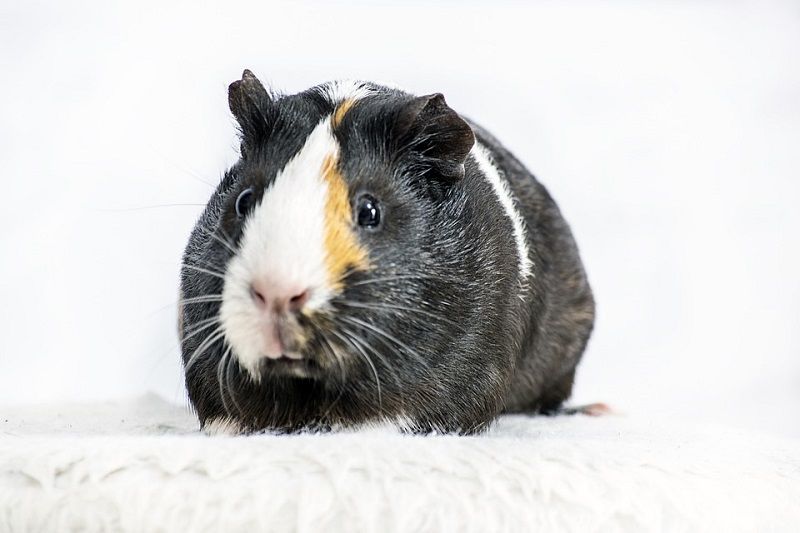
Health & Care
Since guinea pigs are one of the larger domesticated rodents, find a cage that will allow them to fully stand up on their back legs and get plenty of exercise. Fill the bottom with some kind of bedding to make it more comfortable for them. The bedding needs to be safe to eat because the guinea pig will doubtless snack on it. Ensure that their cage is not in the path of ventilation and that they feel safe.
Getting regular exercise helps a guinea pig stay fit and stops them from gaining too much weight. They should get the opportunity to run around outside of their cage at least once a day. Protect them from extreme temperatures. Don’t take them outside unless the climate is similar to the indoor temperature.
Suitability
Guinea pigs are suitable for families with children, although small kids should be taught how to handle them carefully. Keep them away from other, larger pets. Being around cats and dogs can be dangerous for them and will likely cause them anxiety.

Which Breed Is Right for You?
Guinea pigs are a more robust and resilient breed of rodent that is often thought to be slightly more intelligent than a gerbil. However, they do need more space because they are so much bigger than a gerbil.
Both these pets need daily interaction and socialization. They need cages that are suited to their size and that give them enough space to be active in, with comfortable bedding.
If you want a low-maintenance pet to fit into a smaller part of your house or apartment, gerbils are easier to manage and take up less space. Guinea pigs tend to be slightly more interactive if you want something to train and can be kept outside if the weather is temperate and they are protected.
Featured Image Credit: Top – simbagolden, Shutterstock | Bottom – vantagepointfl, Pixabay

